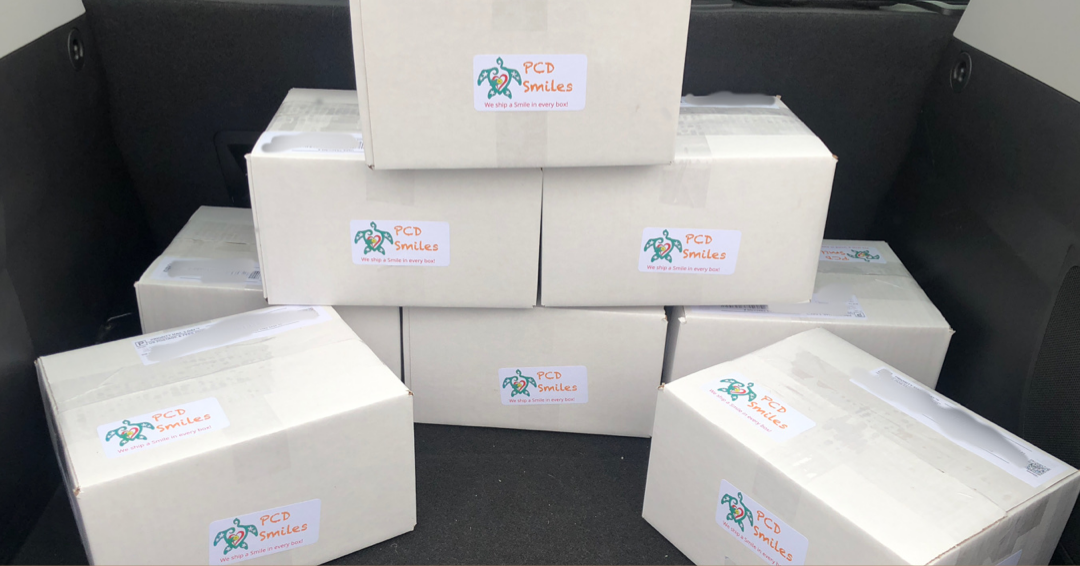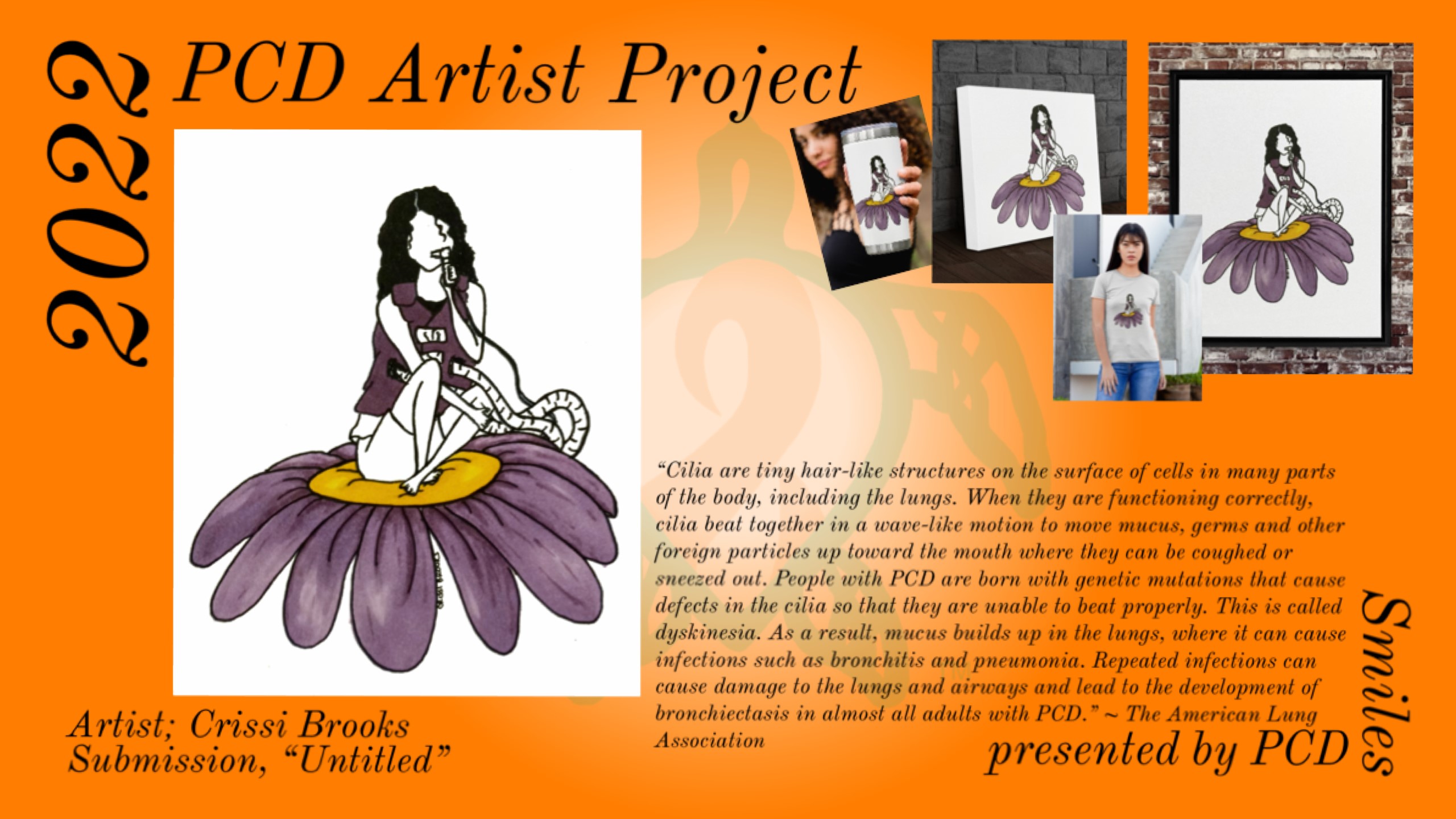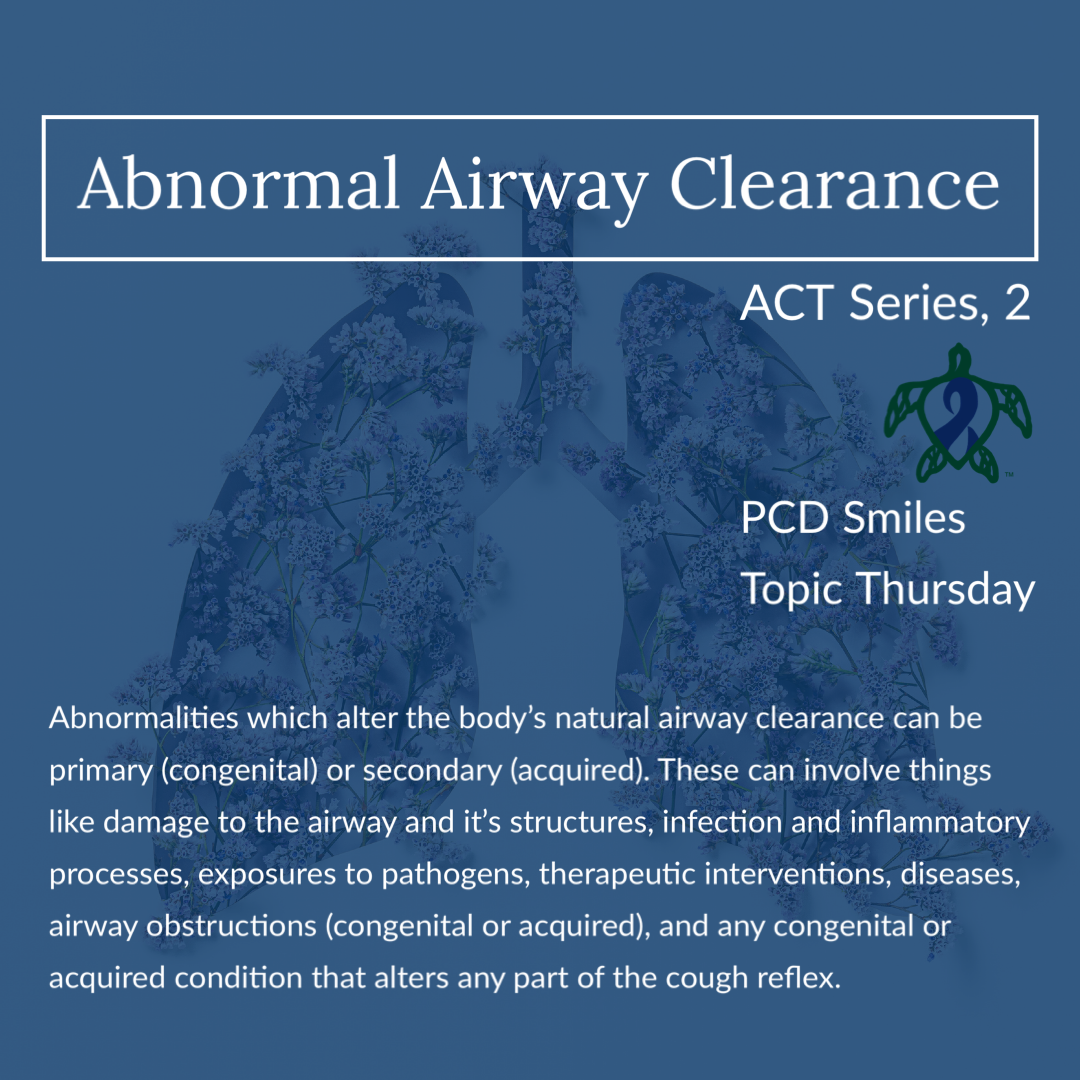As we continue our deep dive into airway clearance we turn to abnormal airway clearance. Abnormalities which alter the body’s natural airway clearance can be primary (congenital) or secondary (acquired). These can involve things like damage to the airway and it’s structures, infection and inflammatory processes, exposures to pathogens, therapeutic interventions, diseases, airway obstructions (congenital or acquired), and any congenital or acquired condition that alters any part of the cough reflex.
First let us look abnormal airway clearance that is secondary. Therapeutic interventions used in critical care and even at home can result in damage to the mucociliary escalator. One such intervention is suctioning. Suctioning the airways can result in damage to the cilia from the forced airflow, damage to airway mucosa, damage to the airway structures that the tube and or the end of the suctioning tube touches during suctioning, the insertion of the suctioning tube interrupts the closure of the glottis which interferes with cough reflexes, and introduction of pathogens from the suctioning tube itself. Another such intervention deals with patients on ventilators. Patients on ventilators experience some of the same issues caused by suctioning. But they may also experience improper humidification and will experience depression of cough reflexes due to various drugs for pain and anesthesia, high airflow rates, complete blockage of the mucociliary escalator exit, and then any underlying pulmonary conditions they may have as well. Bacterial, viral, and chemical exposures can cause abnormal airway clearance by triggering increased mucus production and the release of certain chemical mediators such as elastase, proteases, and leukotrienes that damage airway walls. Retained secretions from bacterial, viral, and chemical exposure become breeding grounds for additional infections and inflammation that can cause partial or full airway blockages (mucus plugging); leading to pneumonia, atelectasis, air trapping, overdistension of alveoli, ineffective cough, and more. The infectious process of inflammation and release of chemical mediators leads to increased mucus production which becomes a vicious cycle leading to abnormal airway clearance. Postoperative patients experience abnormal airway clearance for a number of reasons including damage to airways from being on a ventilator; suctioning; drugs that suppress breathing, pain, and interfere with cough reflex; and postoperative pain that interferes with any part of the cough reflex process. There are also a few other noteworthy acquired abnormal airway clearance issues like a foreign body in the airway, thoracic injury or other thoracic abnormalities, tumors, bronchitis, bronchspasms, and other internal and external obstructions. For more information on secondary abnormal airway clearance issues, see your treating physician and clinic respiratory therapist.
Next we turn our attention to primary or rather congenital abnormalities in airway clearance that cause the retention of secretions and alter airway clearance. These include cystic fibrosis and primary ciliary dyskinesia. Cystic Fibrosis (CF) is the more common of the two diseases and involves a defective CFTR gene (cystic fibrosis tranmembrane conductance regulator). The CFTR protein helps to maintain the balance of salt and water on many surfaces of the body, including the airways. In the airways the imbalance of salt and water across cell membranes leads to altered viscosity of the body’s mucus and that leads to the thick sticky mucus that then has trouble moving up the mucociliary escalator. This thick sticky dehydrated mucus damages the cilia, airway walls, and becomes a breeding ground of infections which leads to airway inflammation and alters cough reflexes. Although more rare, primary ciliary dyskinesia (PCD) involves over fifty genes that are responsible for the proteins that build the cilia themselves. Without properly working cilia the mucus bed can not ride up the mucociliary escalator so the mucus just sits in the airways. The body’s natural reaction to stuck mucus is to make even more mucus that is then still stuck because the escalator is not working. These stuck secretions seen in PCD become breeding grounds for infection and inflammation that lead to the release of chemical mediators such as elastase, proteases, and leukotrienes that damage airway walls. More recent research has debunked the theory that unlike CF, cough clearance is retained in patients with PCD. It has now been demonstrated that cough clearance (reflexes) in PCD is ineffective in regards to maintaining normal airway clearance. In both CF and PCD the destruction of the airway walls leads to bronchiectasis which adds another layer to abnormalities in effective airway clearance in these two diseases. For more information on primary abnormal airway clearance issues, see your treating physician and clinic respiratory therapist.
Although evidence whether artificial or therapeutic airway clearance therapy is effective or even which type of airway clearance therapy is effective for patients with primary ciliary dyskinesia (PCD) is lacking. The over all consensus is that the body’s natural airway clearance is impaired in patients with PCD. When the body’s natural ability to clear it's airways is impaired in anyway it leads to retained secretions (mucus) that then becomes a breeding ground for infections. These retained secretions and later infections can damage any part of the body’s natural airway clearance. Improperly applying artificial or therapeutic airway clearance techniques can also damage any part of the body’s natural airway clearance as well. Learning the ins and outs of artificial or therapeutic airway clearance techniques is essential to doing life with primary ciliary dyskinesia. We hope that you join us next week for part three of our series on airway clearance techniques.
Be sure to join us next week for another Topic Thursday.
Join our Facebook group Turtle Talk Café today, click here.
We have several ways that you can donate to PCD Smiles;
- Visit Smile E. Turtle's Amazon Wishlist
- For more information on how you can donate, please visit our "Donation" page to check out our "Do & Don't policies.
- Or sponsor a PCD Smiles cheer package today!
- To shop for your “Official” turtle care ribbon gear today, visit PCD Style or Smile E. Cove
Thank you for your consideration!
***Please speak to your respiratory therapist or your PCD medical team before commencing any new treatment. DO NOT start using a device, or technique, on this website if you have not discussed this with your PCD team first.***














